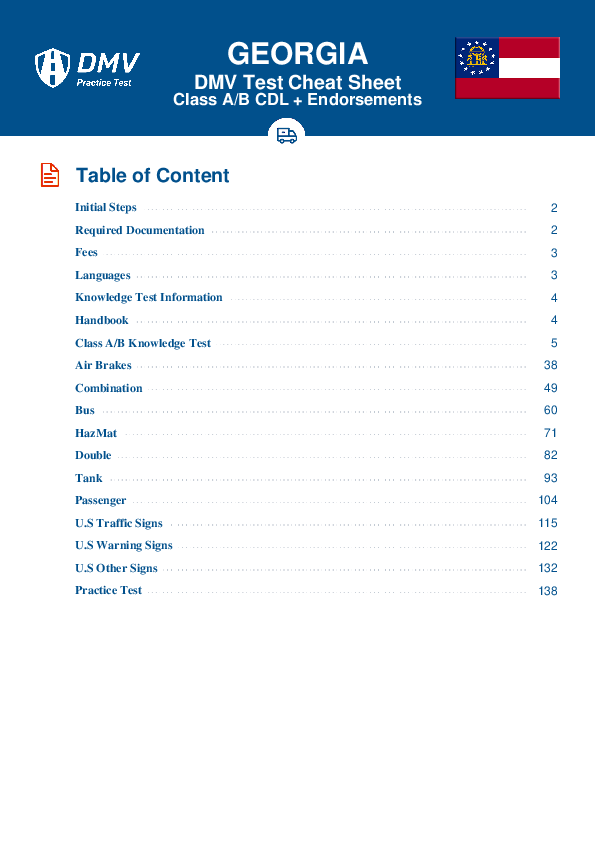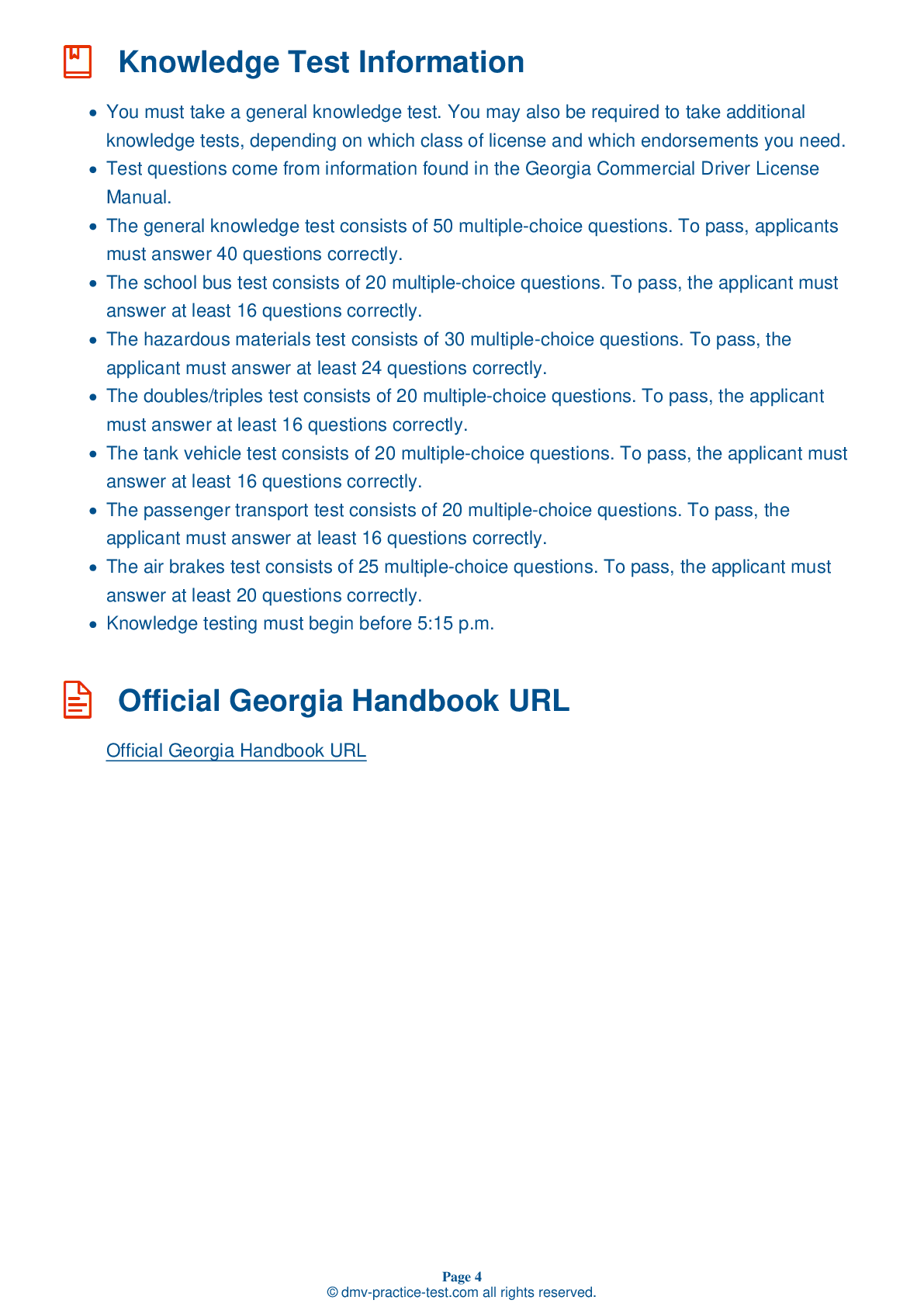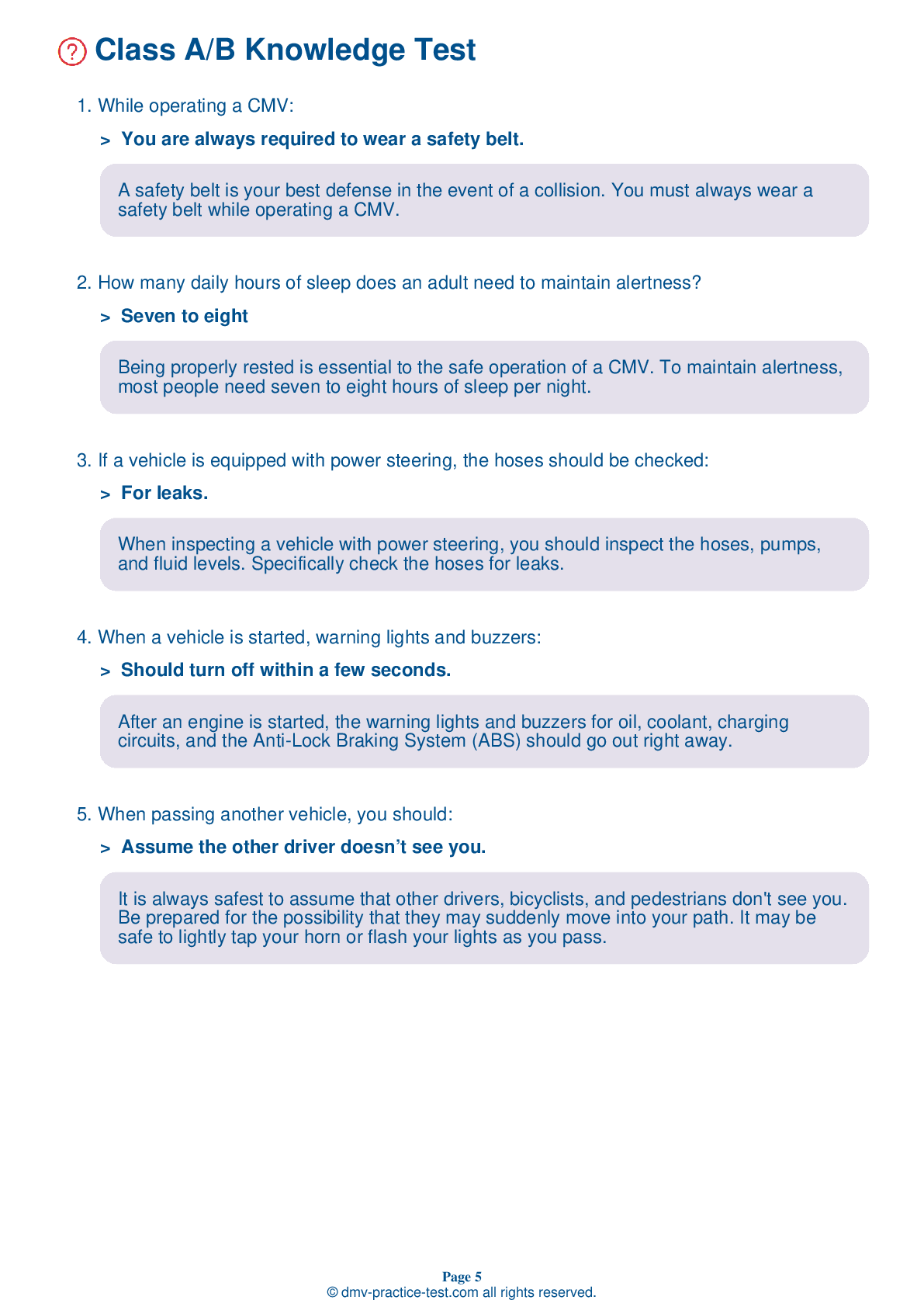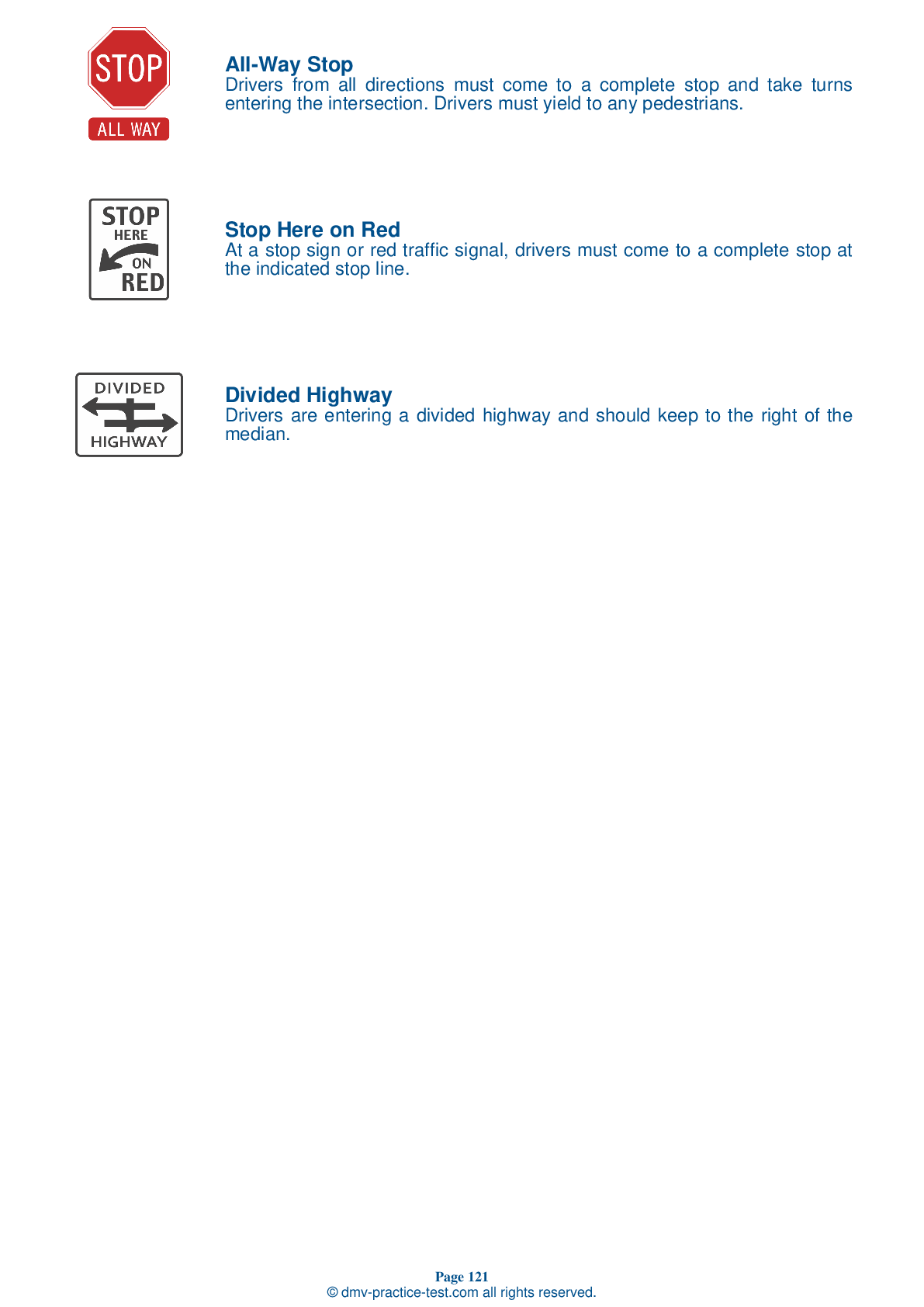Combination #1
Combination Vehicles Practice Test | Georgia 2025 #1 Page 2 of 3
Train for FREE online with our Georgia CDL combination vehicle test. The official exam test consists of several obligatory parts, with all of them checking your knowledge of different blocks of road rules. If you need to obtain a GA combination license in 2025, practice as much as possible. Free sample tests published on our website will help you check and improve your knowledge and boost your grades. Please bear in mind that DMV requirements for issuing a combination license may vary from state to state.
20
16
20
8 . When coupling a trailer:
Only one set of glad hands should be connected.
When coupling, make sure you couple matching glad hands. They are often color-coded to help drivers avoid mistakes. Typically, blue is used for service lines and red is used for emergency lines.
9 . When glad hands are coupled, the seals should be pressed together at an angle of:
90 degrees.
When coupling, be sure to couple the proper glad hands. When glad hands are connected, the seals should be pressed together at a 90-degree angle.
10 . The trailer hand valve should be used:
To test the lights on the trailer.
The trailer hand valve, also called the trolley valve or Johnson bar, is used to work the trailer brakes. It should be used only to test the brakes.
11 . The trailer hand valve should:
Be used on slippery surfaces.
The trailer hand valve works the trailer brakes but should only be used when testing them. Using it while driving could create a skid. Never use the trailer hand valve while parking because doing so may release the air pressure from the braking system, releasing the brakes that are holding the vehicle in place.
12 . Pull out the trailer air supply control to test:
The landing gear.
Be sure to test the trailer emergency brakes before beginning a trip. After ensuring that the trailer rolls freely, you can test the emergency brakes by pulling out the trailer air supply control, or placing it in the "emergency" position. Pull forward slightly with the tractor and make sure the trailer does not move.
13 . What happens when the wheels of a trailer lock up?
The trailer will stop.
A trailer tends to swing around, potentially resulting in a trailer jackknife, if its wheels lock up.
14 . Air pressure in the ____ air line is controlled by either the foot brake or trailer hand brake.
Auxiliary
Air pressure in the service air line is controlled by either the foot brake or trailer hand brake. The service air line is also known as the control line or signal line. This line is connected to relay valves, which allow the trailer brakes to be applied more quickly than would otherwise be possible.
Search the best driving school in your neighbourhood
2025 Georgia | Frequently Asked Questions
To acquire a CDL Hazmat endorsement in Georgia, you must possess a valid Commercial Driver's License (CDL). Next, pass the Hazardous Materials Endorsement Knowledge Test at a DDS Customer Service Center. Finally, submit to a federal background check and fingerprinting by the Transportation Security Administration. Remember to pay required fees for application and fingerprinting.
To obtain a CDL Hazmat license, you must have a valid Commercial Driver's License (CDL). You must also pass the Hazardous Materials Endorsement Knowledge Test. Additionally, you're required to undergo a federal background check and fingerprinting by the Transportation Security Administration. You must be a U.S. citizen or have legal status, and you should have a clean driving record.
When applying for a CDL Hazmat endorsement, you are required to provide proof of U.S. citizenship or lawful permanent residency. This can be a U.S. passport, birth certificate, or green card. You'll also need your current valid Commercial Driver's License (CDL). Remember to bring documentation for any name changes and payment for the application and fingerprinting fees.
Yes, there is a dedicated written test for the CDL Hazmat endorsement. This test is designed to assess your knowledge of hazardous materials transportation regulations, such as safe loading, unloading, and transport. The test typically includes questions about identifying different types of hazardous materials and understanding emergency procedures. You must pass this test to receive the endorsement.
The written test for the CDL Hazmat endorsement covers a range of topics related to hazardous materials. These include identifying different types of hazardous materials, understanding shipping papers, recognizing placards and labels, handling emergencies, loading and unloading procedures, and understanding the rules for transporting hazardous materials safely.
Yes, there are additional costs associated with obtaining a CDL Hazmat endorsement. These include a fee for the knowledge test, a fingerprinting fee for the TSA background check, and a fee for adding the endorsement to your CDL. The exact amount can vary, so it's best to check with your local DMV for the most accurate information.
Yes, obtaining a CDL Hazmat endorsement requires a Transportation Security Administration (TSA) background check. This includes a review of criminal, immigration, and FBI records. It is meant to ensure that drivers who transport hazardous materials pose no security threat. The process involves fingerprinting and a fee, and it must be completed before the endorsement is granted.
Yes, specialized training is required for the CDL Hazmat endorsement. This includes passing a written knowledge test about hazardous materials regulations and safety procedures. Additionally, a TSA background check is required, but no specific certification beyond the endorsement on your CDL is necessary.
No, you cannot legally transport hazardous materials without a valid CDL Hazmat endorsement in Georgia. This endorsement ensures that the driver has the necessary knowledge and skills to safely handle and transport hazardous materials. Violating this requirement can lead to severe penalties, including fines and suspension of your commercial driver's license.
You can add the CDL Hazmat endorsement to your current CDL license. This involves passing a written knowledge test and a TSA background check. You don't need to apply for a new CDL, but you must go through the endorsement process with the Georgia Department of Driver Services.




